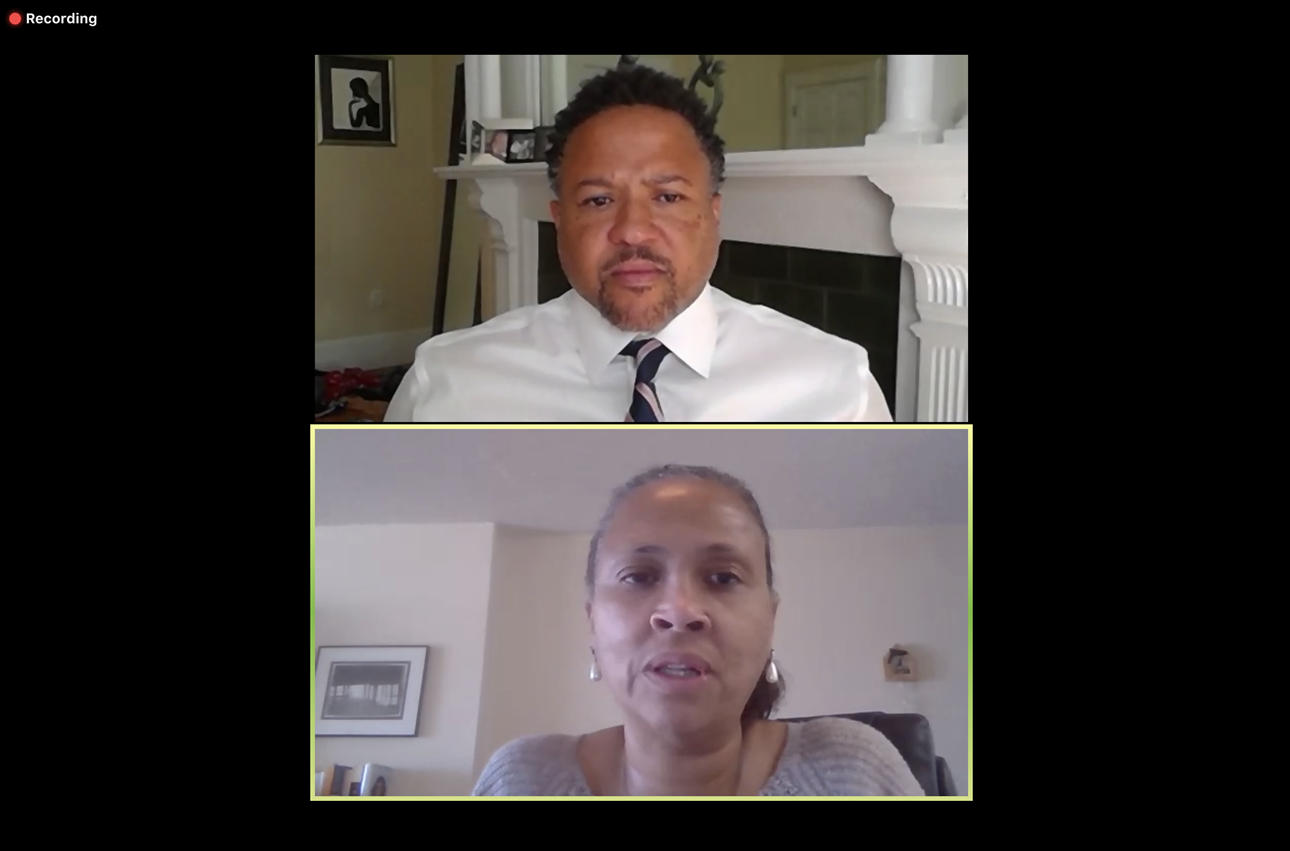Breaking Down Racial Barriers to Philanthropy
At a conversation with Echoing Green President Cheryl Dorsey, an exploration of the racial inequities in philanthropy, and our unique opportunity to wipe them away now
September 30, 2020
More than 300 people joined Boston Foundation Vice President for Programs Orlando Watkins on September 30 for Reforming Philanthropy with a Racial Equity Lens, a one-hour conversation with Echoing Green President Cheryl Dorsey. Together the pair, both of whom are graduates of Echoing Green’s Fellows Program, explored the research and discussed how racial equity issues are playing out in the field during the twin pandemics of COVID-19 and racial injustice.
However, he noted, the Foundation’s own learning journey on issues around racial equity is still just beginning. He also raised concerns over signs that national energy behind Black Lives Matter and other racial justice efforts is fading as the months pass.
Letting that energy fade would be a tragic missed opportunity, said Dorsey. She cited a history of lost opportunities over the past 400 years, an arc that can be traced from the aspirational visions of 17th- and 18th-century abolition movements, through the Civil Rights Movement to today.
While the issues aren’t new, the breadth of participation and energy in the racial justice movement in 2020 might be, she said, noting surveys that over 20 million (6 percent) of all Americans personally have marched and rallied for justice. “There is an opening,” she said, “and shame on us if we don’t take advantage of the moment to at least further the agenda.”
From the broader issues, Watkins and Dorsey shifted their discussion to the nonprofit sector, and in particular, to the barriers that nonprofit leaders face in raising money from philanthropy. Dorsey introduced four critical barriers to sustainable funding facing nonprofit leaders of color that emerged from Echoing Green’s research (done in partnership with Bridgespan). They included:
- Getting connected: Inequitable access to social networks that connect nonprofits to philanthropic leaders.
- Building rapport: Interpersonal biases that make it hard for BIPOC leaders to build trust and strong relationships with philanthropic leaders.
- Securing support: Mismatches between outdated or inflexible philanthropic models of finding and evaluation and approaches that are culturally relevant in the communities that nonprofits are serving.
- Sustaining relationships: Barriers, such as inflexible or outdated strategy and evaluation requirements, that inhibit the long-term relationships (and funding streams) between funders and nonprofits.
These are systemic problems, Dorsey noted, and they are often rooted in funders’ lack of understanding of the power of race and proximity in addressing social change. “When you don’t have an (understanding) of the power of race in these issues, you end up talking past one another,” she said. “You don’t recognize the significance of people of color as leaders.”
And the results are financially devastating. Dorsey cited the example of a survey of organizations in Echoing Green’s Black Male Achievement fellowship, which focuses on improving the life outcomes of black men and boys in the United States. The revenues of the Black-led organizations in that cohort are 45 percent smaller than those of the White-led organizations – and their unrestricted net assets are 91 percent smaller – for organizations doing the same work.
The lack of unrestricted support, Dorsey said, is “a proxy for lack of trust… When that channel is cut off, it cements inequities even further.”
COVID-19, however, gave a glimpse at a different path. Referring to the COVID-19 response funds established at the Boston Foundation and elsewhere, Dorsey said, “In the moment (of the pandemic), you all acted – it was getting funding out and putting aside normal grant requirements. That was good work, but can you continue that kind of flexibility and shared accountability?”
For grantmakers like the Boston Foundation, continuing that path forward involves working with stakeholders both inside and outside the organization. “We are trying to right an imbalance and (a history of) disinvestment, but we also have to bring other organizations along in their journey,” Watkins said. “We are also on our own journey to think about the shared goal of racial equity within the entire organization, not just Programs.”
As the conversation concluded, Watkins and Dorsey agreed that there is a powerful place for community foundations to fill the chasm between the “grassroots” leaders in our communities and the “rooftops” of philanthropy. With a deep, proximate understanding of both the issues and local communities, and a grasp of the dynamics of philanthropy, community foundations could become social impact intermediaries, part of the connective tissue of the broader system.

